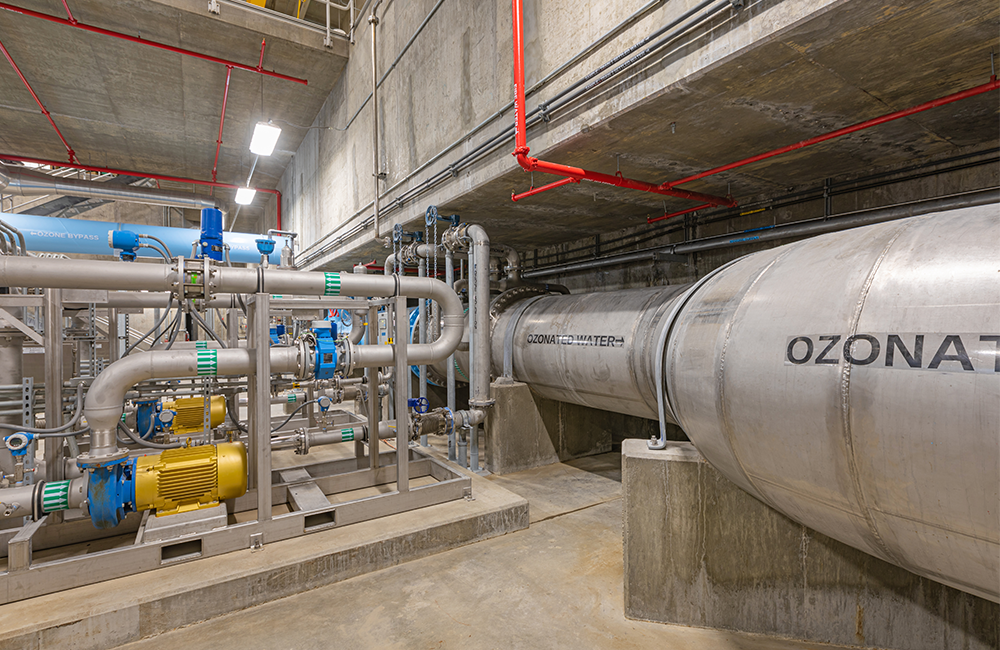Solution
With a strict budget and timeline for completing the new plant, the city quickly determined that the safest way to meet its cost, schedule and treatment objectives was to use progressive design-build delivery. This method would provide greater flexibility in terms of expediting the project delivery schedule. The city also determined this method would increase opportunities for value engineering, promote team collaboration, and decrease scope changes and change orders during construction. The city awarded the project to a design-build team of Burns & McDonnell and Garney Construction. Burns & McDonnell served as the lead engineering design firm.
The team began design for the new TWTP in March 2017. The design team collaborated daily with Thornton staff, the construction team and the owner’s adviser to identify and mitigate risks that could adversely affect the city’s cost, schedule and treatment goals.
The team presented multiple engineering design packages as part of the process for reaching agreement on the optimal design. Because of the flexibility of this design-build approach, foundation work began after only 60% of the design had been finalized.
The plant was designed to treat a wide range of water quality from the city’s multiple water sources. The raw water intake area allows isolation or blending of the raw water sources before the water is sent to the pretreatment processes to reduce turbidity caused by smaller particles and condition the water for filtration.
Flash mixing is the first component of the pretreatment stage. It involves injection of chemicals via a nozzle within the raw water pipeline to destabilize particles suspended within the water. From there, the water moves to the flocculation stage, a mixing process with three zones of decreasing intensity, allowing the destabilized particles to combine and form larger particles that more easily settle to the bottom.
Next, the water moves into a sedimentation zone with stainless steel plate settlers designed to separate solids via gravity. The plate settlers are designed with an inclination to increase the settling rate for optimal separation. After flowing through the plates, the water is then ready for ozone injection in an intermediate treatment stage.
The ozone injection process addresses naturally occurring compounds, 2-methylisoborneol and geosmin, that are the primary causes of taste and odor issues in the raw water supply. The ozone oxidizes these and other organics as well as pharmaceutical compounds and algal toxins. Additionally, ozone provides disinfection that reduces the formation of chlorinated disinfection byproducts if they are present.
Following ozone injection, water moves to a biological filtration stage consisting of granular media filters without chlorination or other compounds that could deter growth of the microscopic beneficial bacteria. Functioning similarly to conventional granular media filters, biological filtration is an additional treatment stage that typically is used within wastewater treatment facilities as a way of removing remaining impurities.
The final treatment stage is a chlorine disinfection process to remove giardia lamblia, a microorganism that can cause intestinal distress if present in large amounts, as well as viruses. The entire treatment process produces drinking water that exceeds existing state and federal water quality standards.

